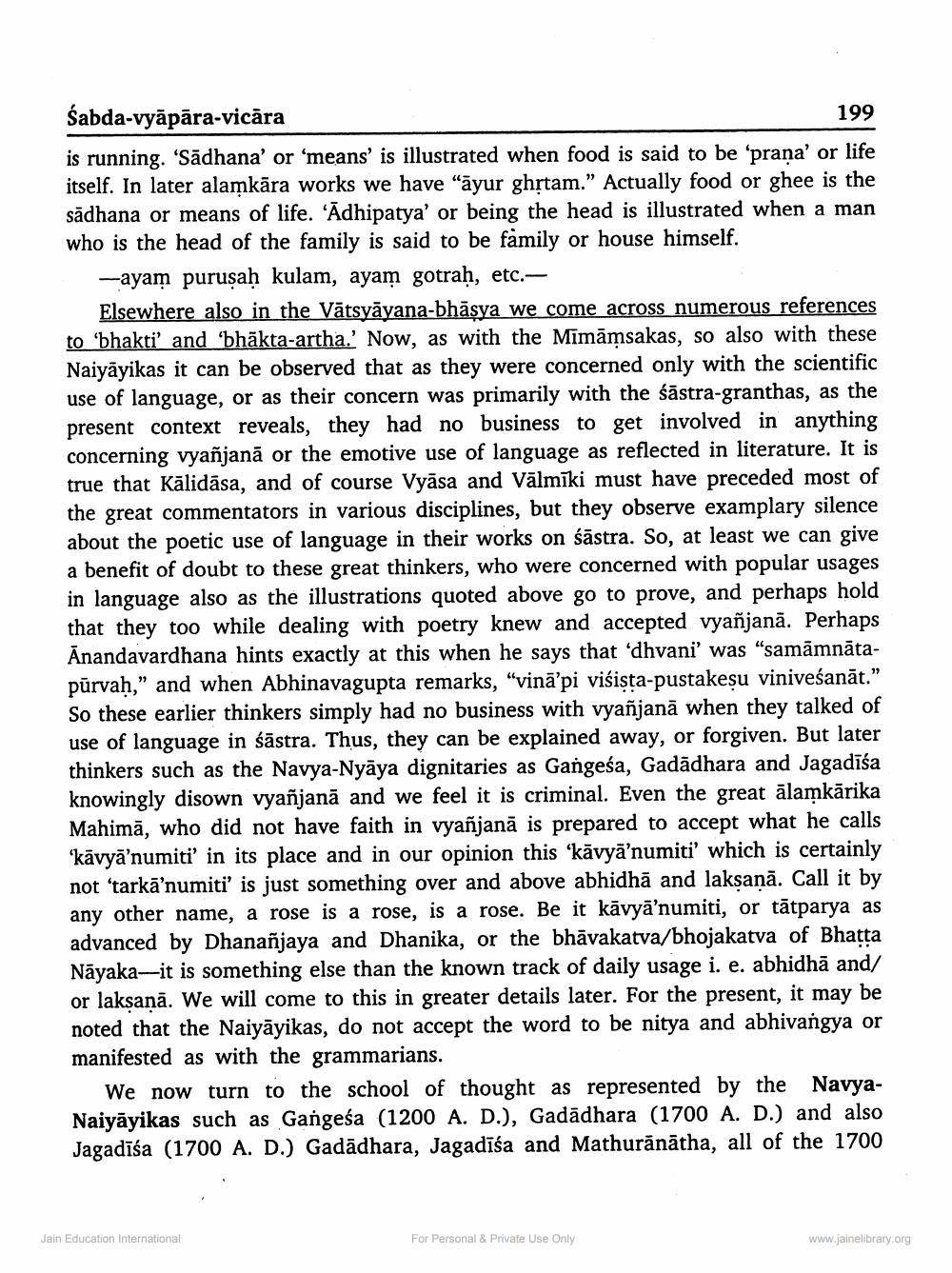________________
Śabda-vyāpāra-vicāra
199
is running. 'Sadhana' or 'means' is illustrated when food is said to be 'prana' or life itself. In later alamkāra works we have "āyur ghệtam.” Actually food or ghee is the sādhana or means of life. 'Ādhipatya' or being the head is illustrated when a man who is the head of the family is said to be family or house himself.
-ayam puruṣaḥ kulam, ayam gotraḥ, etc.
Elsewhere also in the Vātsyāyana-bhāsya we come across numerous references to 'bhakti' and 'bhākta-artha.' Now, as with the Mimāmsakas, so also with these Naiyāyikas it can be observed that as they were concerned only with the scientific use of language, or as their concern was primarily with the śāstra-granthas, as the present context reveals, they had no business to get involved in anything concerning vyañjanā or the emotive use of language as reflected in literature. It is true that Kālidāsa, and of course Vyāsa and Vālmīki must have preceded most of the great commentators in various disciplines, but they observe examplary silence about the poetic use of language in their works on śāstra. So, at least we can give a benefit of doubt to these great thinkers, who were concerned with popular usages in language also as the illustrations quoted above go to prove, and perhaps hold that they too while dealing with poetry knew and accepted vyañjanā. Perhaps Anandavardhana hints exactly at this when he says that 'dhvani' was "samāmnātapūrvah,” and when Abhinavagupta remarks, "vinā’pi visista-pustakesu viniveśanāt.” So these earlier thinkers simply had no business with vyañjanā when they talked of use of language in śāstra. Thus, they can be explained away, or forgiven. But later thinkers such as the Navya-Nyāya dignitaries as Gangesa, Gadādhara and Jagadīša knowingly disown vyañjanā and we feel it is criminal. Even the great ālamkārika Mahimā, who did not have faith in vyañjanā is prepared to accept what he calls ‘kāvyā’numiti' in its place and in our opinion this ‘kāvyā’numiti' which is certainly not 'tarkā’numiti' is just something over and above abhidhā and laksanā. Call it by any other name, a rose is a rose, is a rose. Be it kāvyā'numiti, or tātparya as advanced by Dhananjaya and Dhanika, or the bhāvakatva/bhojakatva of Bhatta Nāyaka—it is something else than the known track of daily usage i. e. abhidhā and/ or laksanā. We will come to this in greater details later. For the present, it may be noted that the Naiyāyikas, do not accept the word to be nitya and abhivangya or manifested as with the grammarians.
We now turn to the school of thought as represented by the NavyaNaiyāyikas such as Gangesa (1200 A. D.), Gadādhara (1700 A. D.) and also Jagadīša (1700 A. D.) Gadādhara, Jagadīša and Mathuranātha, all of the 1700
Jain Education International
For Personal & Private Use Only
www.jainelibrary.org




